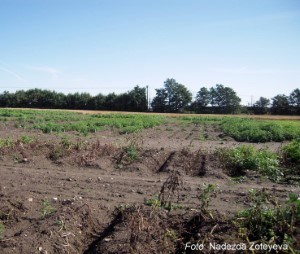Facts:
Due to the large susceptibility to many pests and diseases potato is one of the most problematic crops in organic agriculture. One of the worst threats is late blight caused by Phytophthora infestans. The alternatives in organic growing systems to reduce the damage of this oomycetecomes down to the use of early maturing cultivars or to kill the haulm early, before the attack. Another alternative is resistant cultivars. Unfortunately the number of such cultivars is low.
Today the organic sector is more or less dependent on cultivars from breeding programs for conventional agriculture. Even if many of the requirements of organic potatos are the same as for conventional, yield still has top priority in conventional production. At present this can not be first priority for organic growing systems. Here top priority instead has to be on late blight resistance, nutrient-efficiency and earliness.
